
Gio Ponti, Design for the “Nuvole sono immagini” (Clouds are Images) lectures, 1967. © Savlatore Licitra-Gio Ponti Archives.
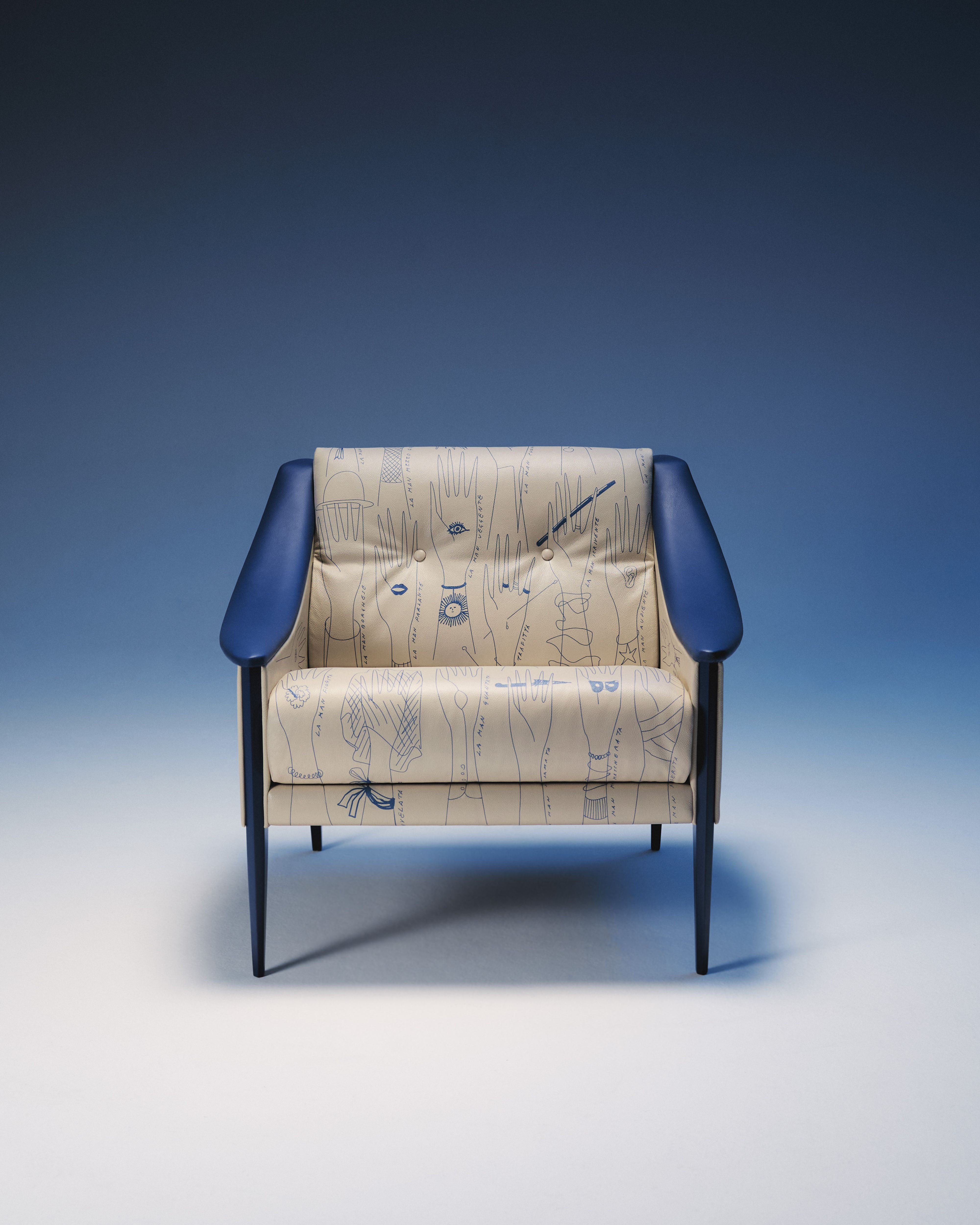
Marking its 60th anniversary this year, the limited edition Dezza chair showcases an original and unpublished illustration by its creator, the esteemed Milanese architect and designer Gio Ponti — an intricate motif of 26 stylized hands. Courtesy Poltrona Frau.
The late Italian architect Gio Ponti (1891–1979) moved through the 20th century like a man who had already seen it all. He worked in shadows and light, in the delicate curve of porcelain, in the geometry of towers that scraped against the Milanese sky. He was everywhere: teapots, chairs, interiors, entire buildings. Even publishing. Domus in 1928. Stile in the 1940s. The architecture of words as much as the architecture of space. Through it all, one motif repeated itself, insistently: The human hand. “Ponti was obsessed with hands,” says Karl Kolbitz, editor of the definitive book on Gio Ponti (Taschen, 2021). “You can find the hand in all of his work, from the very early years of his practice until his death.” And there they are, the hands: porcelain and lifelike when he was artistic director at Richard Ginori in 1923, like hands in old shop windows, displaying gloves. Over time, the hands multiplied. They turned up in prints, in sculptures, in letters to friends and patrons — painted letters, illustrations that floated between dream and blueprint. Hands drifting across clouds. Hands smoking pipes. Hands speaking in a language of their own.

Gio Ponti drawing hands circa 1970. Courtesy Gio Ponti Archives © Gio Ponti Heirs Historical Archive.

Gio Ponti, Design for the “Nuvole sono immagini” (Clouds are Images) lectures, 1967. © Savlatore Licitra-Gio Ponti Archives.

Gio Ponti, Letter to Lisa, 1952. Courtesy Gio Ponti Archives.

Gio Ponti, hand with gold symbol and flowered hand, 1935. © Salvatore Licitra-Gio Ponti Archives.
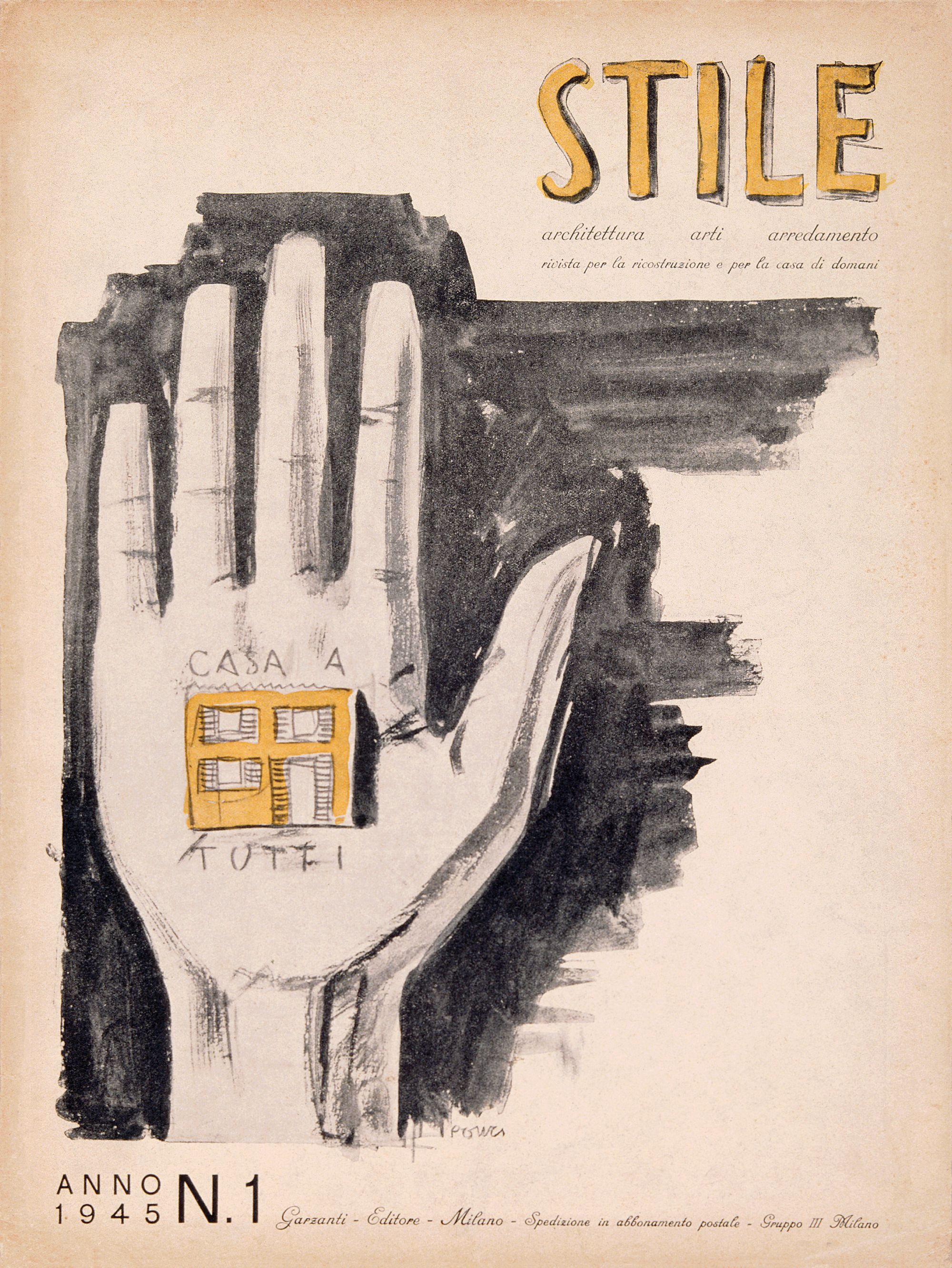
Gio Ponti, cover of Stile, January 1945. ©Salvatore Licitra-Gio Ponti Archives.

Gio Ponti, cover of Stile, August/September/October 1943. ©Salvatore Licitra-Gio Ponti Archives.

Gio Ponti, the Witch’s hand and bowl with barbed key, 1935. Courtesy Gio Ponti Archives © Gio Ponti Heirs Historical Archive.
Now, those hands have resurfaced. A new edition of Ponti’s Dezza armchair, its upholstery covered in a chorus of hands: the gloved hand, the writing hand, the wounded hand, the begging hand, the heart-shaped hand, the winning hand, the fortune-teller hand. Twenty-six variations, each one suggesting something just out of reach. The Dezza was first released in 1965 and has never disappeared since. It has been in continuous production, held in place by its own modernity. Poltrona Frau, the Italian design house that knew Ponti, worked with him, understood him, and produces the armchair still, upholstered it now in their Pelle Frau® Impact Less leather, in shades of Panna cream and Iris blue. Sixty limited editions, 60 years since its inception, each bearing a metal tag, a certificate of authenticity. “The armchair was designed exclusively for Poltrona Frau 60 years ago,” Poltrona Frau CEO Nicola Coropulis says. “It has retained all its timeless modernity.”
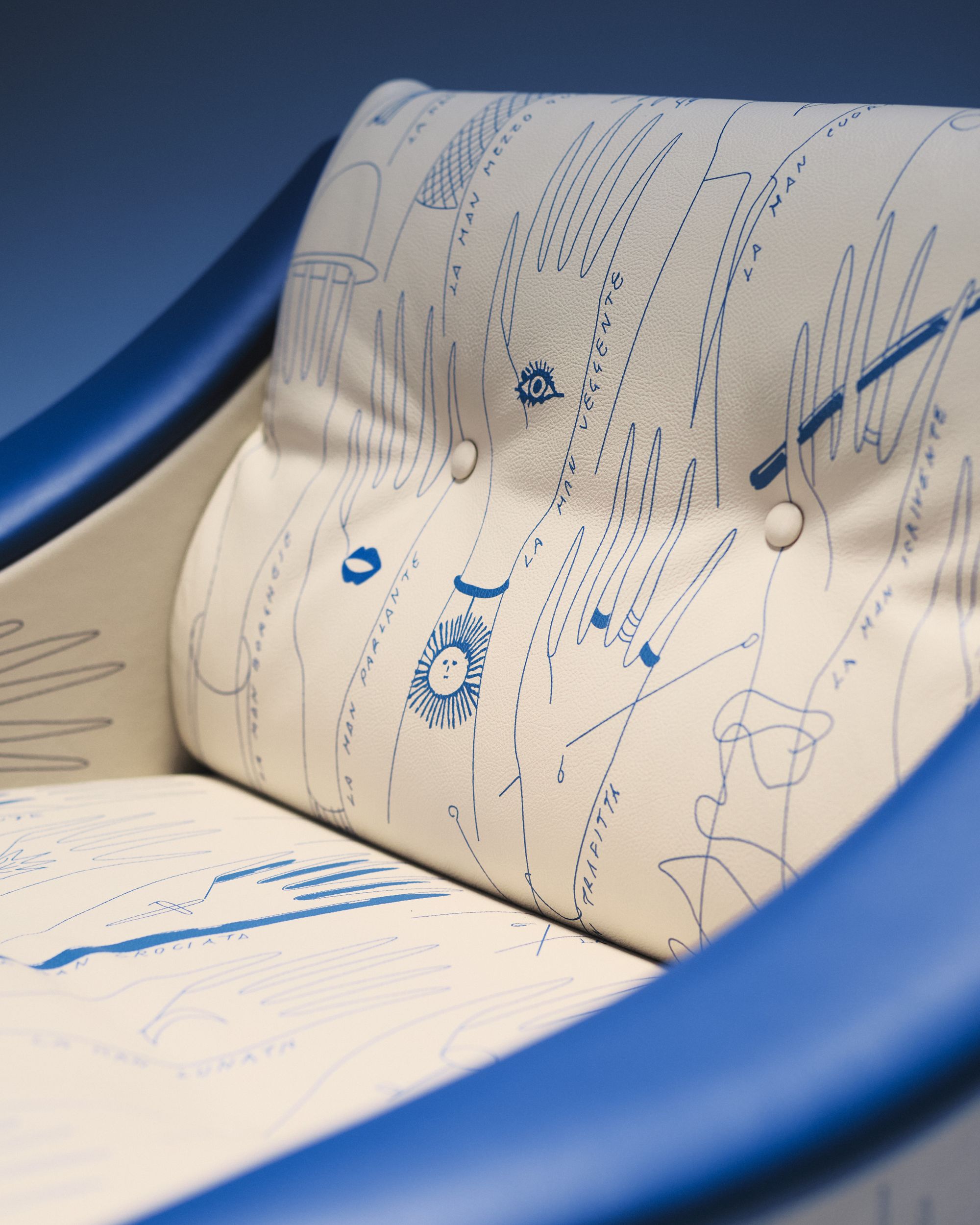
Detail of the limited edition Dezza chair. Courtesy Poltrona Frau.

The limited edition Dezza chair. Courtesy Poltrona Frau.

Detail of the limited edition Dezza chair. Courtesy Poltrona Frau.
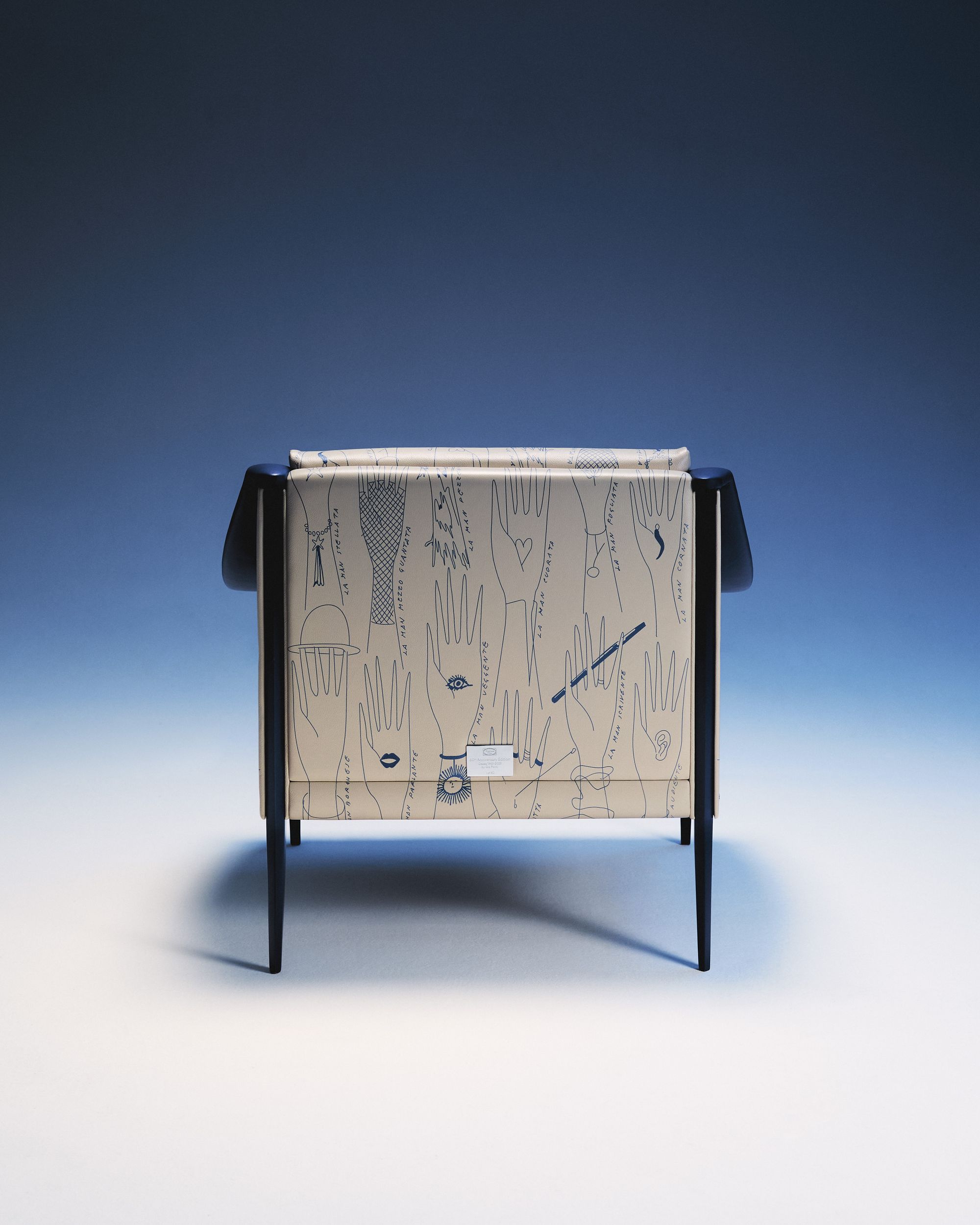
The limited edition Dezza chair. Courtesy Poltrona Frau.
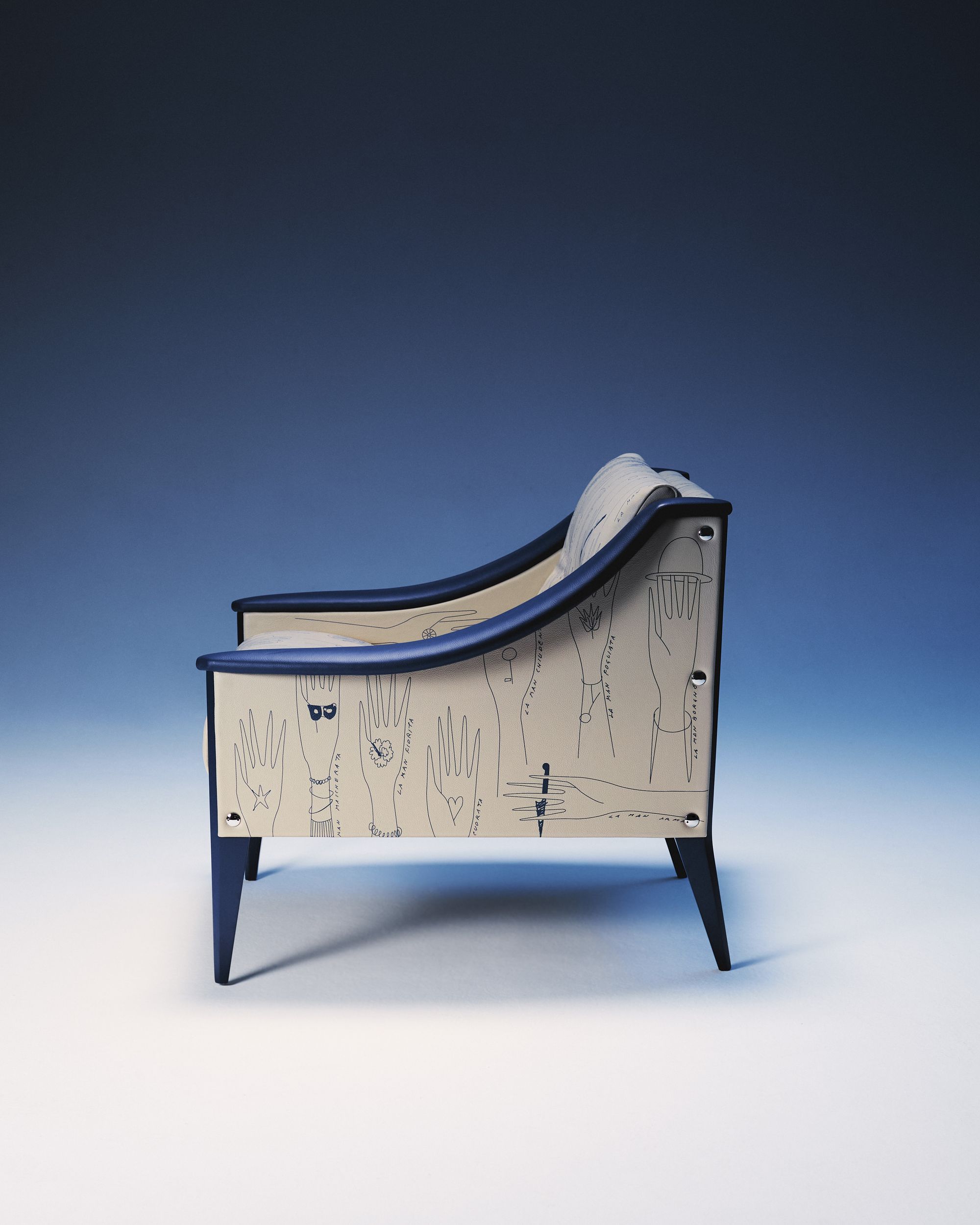
The limited edition Dezza chair. Courtesy Poltrona Frau.
And of course, it has. Ponti understood what it meant to endure. He was a dreamer, yes, but he was practical too. He believed in beautiful things, but also in things that could be assembled quickly, in chairs that could populate hotels and grand lobbies, in objects meant not just to be seen but to be lived with.
The armchair takes its name from Via Dezza, where Ponti lived, where he worked, where he drew. He was always drawing. A hand sketching an armchair, an armchair shaped by a hand. “I like to think that the hand presented to him the gesture of protection, of giving,” says Kolbitz. “But also as a creative tool, the way he and all of his collaborators communicated. They spoke through drawing, and by extension, through the hand.” Salvatore Licitra, director of the Gio Ponti Archives, puts it more simply. “Ponti’s hand represents the human ability to imagine, to go beyond the world of objects, to enter those of theater, poetry, and playfulness.”
And maybe that is the point. Maybe Ponti’s hands, appearing and reappearing, were never just decoration, never just a motif. Maybe they were something else entirely. A gesture, a question, an invitation. Poltrona Frau’s limited edition does not just commemorate Ponti. It extends a hand, back through time, toward him. A silent understanding, an unmistakable sleight of hand.

Gio Ponti, photographic sets and scenography, circa 1950. Courtesy Gio Ponti Archives © Gio Ponti Heirs Historical Archive.